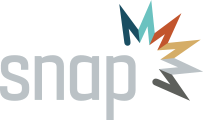Internet marketers like to proclaim that Facebook is a shadow of its former self. In some ways, this is true. Facebook isn’t particularly cool or cutting edge these days. And that’s okay.
Because even though Facebook might not be hip, it sure is big. There are over 1.2 billion monthly Facebook users. That’s a lot of potential for marketing… and even sales.
Here’s what you need to know:
What Facebook Can Do For You
Facebook can help you in a few ways. First, Facebook is a great place to learn more about your customer base. Facebook is also a great tool for increasing brand exposure. Finally, a Facebook conversion funnel can lead to increased sales.
Understanding the Facebook User
When you log into Facebook, are you there to see what your friends are up to? Or are you logging in to purchase a product? We’re guessing the former. As research from internet marketer Aaron Zakowski shows, Facebook is primarily a social outlet.
Facebook requires a different approach than other marketing strategies. What works with AdWords, for instance, won’t work here.
Facebook users have low buying intent. This doesn’t mean they won’t buy at all. Instead, you need to take a slower approach.
The Facebook Sales Funnel
A Facebook sales funnel is based around the idea that potential customers aren’t ready to buy right now – but you can slowly build to a sale in the future. Fortunately, Facebook is a great platform for quick, repeated engagements over a long period of time.
Developing High Quality Content
You’ll need to identify your target audience and determine what content they’ll respond to. There are many options here: a long-form blog post, video, access to a webinar, eBook or more.
Whatever type of content you select, you’ll want to host the content on your site, not your social media platform. This helps draw people develop a habit of visiting your site directly. (To be clear, the content can be seen on your social media page. Clicking the content takes the user to your site.)
Promoting Content to Your Warm Audience
Anyone who follows your brand on Facebook can be considered a “warm audience.” This is a marketing term for anyone who has expressed at least some interest in a brand.
You’ll promote different types of content to your warm audience and see what gets the best response. Facebook makes measuring content fairly straight-forward. Which content is getting the most views and likes?
Divide your content into topic and format. Are people responding to specific topics, like how-to guides or news about current events in your industry? Or is there a particular type of content they prefer, like videos or podcasts?
Your warm audience will help you figure what your content should be about and how it should be delivered.
Need help connecting with your audience? Check out our 5 Tips on Writing for Social Media.
Identifying Lookalike Audiences
Facebook collects a ton of data (some say too much). The good news is they’ll let you access that data to find “lookalike audiences.”
Lookalikes are what they sound like. These are people with habits, interests, and behaviors which are very similar to your current audience. While not exactly a warm audience, they’re far from a block of ice.
To find your Lookalike Audience, start at this page in the Audiences section of Facebook ads. Click on “Create a Lookalike Audience.” You’ll be prompted with a few options. Feel free to experiment. Remember, you want the smallest percentage of audience size possible. That’ll help you connect with people who are very similar to your existing customer base.
Promoting Content to Your Cold Audience
You’ve identified your cold audience. Now it’s time to deliver content to them. You’ll use content which your warm audience has already approved of.
A portion of your cold audience will warm to your content. They’ll take another step into the conversion funnel. This might be a request for more content or even a sale. The specific steps in your conversion funnel will be specific to your business and customer base.
While a certain segment of a cold audience will respond to your content, others will not. You want to identify common reasons why people are turning away. Is the price too high? Is the product description unclear?
Using Facebook to Sell
Developing a Facebook conversion funnel, especially if you’ve never done so before, can involve a lot of trial and error. If you want to take your time and explore, there’s really no harm. At the same time, you probably won’t get great results without help from an SEO agency.
Even though people mainly use Facebook as a social outlet, there’s still plenty of opportunities available for brands. With a bit of planning and preparation, a Facebook conversion funnel can help turn likes into sales.
How does your business use Facebook? Do you have any questions about how to develop a Facebook sales funnel? We’re happy to help you explore your options.
